Thursday, October 23, 2025
September 2025 Cookbook Reviews
September 2025 Reviews
She never had a great experience working with Batali - he was always a predatory dick - but she knew he could open doors for her and he did. He was the one who recommended her to Bourdain. Bourdain, thankfully, was not a predatory dick and seemed like a nice guy - although still a celebrity with the expectation of all things magically getting done for him. Woolever seemed to have a much better working environment with Bourdain and he also opened a lot of doors for her. She was just such a trainwreck of a person. I could never figure out what if anything led her to becoming an alcoholic. There didn't seem to be any obvious family trauma or anything that happened to her that would explain her need to be checked out. She also dated or cheated with some of the WORST guys imaginable. Her poor husband. He seemed like a really nice guy who married a tornado of chaos. To me the only enjoyable part of this book was when she was working for Bourdain and when she finally got sober. But I also feel like her sobriety was REALLY glossed over because she made it seem like she just decided to stop when up to that point she was drinking or smoking pot pretty much continuously when she was awake (including a lot of her pregnancy...).
Overall, I would not recommend this one. The only reason I gave it 2 stars was for the parts when she worked for Anthony Bourdain. She was just not a likable person AT ALL.
Some quotes I liked:
"This was one of the many ways that the well-connected rich stay rich, which is by underpaying young, ambitious skilled workers, trading on the promise of access to more rich and/or famous potential clients. Any rich person could pay top dollar for a catered dinner from Glorious Foods, but the real game was to find a hungry, unincorporated lone wolf like me, with a persistent doubt about her own worth, too polite and concerned about seeming greedy or losing the gig to negotiate for anything, for fear of losing out." (p. 108)
"This was the downside of working hard in the shadow of an important man. I should have known better, because I'd spent almost my entire career working in such shadows - Mario's, Hector's, all the big chefs I interviewed for Art Culinaire, everyone with power at Wine Spectator, and now Tony. Very few people are curious about the unknown women who prop up the work of important men. Without the Tonys and Marios and Hectors of the world, there would have been no book or TV show or magazine work for me. The flip side of this, that the end products, credited solely to the marquee men, wouldn't exist without the work of women like me, was both a maddening riddle and a colossal 'no shit.'" (p. 245)
I didn't know who Carlos Whittaker was before reading this book. I wasn't an Instagram fan and I hadn't read any of his other books. I didn't even know the book had a Christian theme/focus when I picked it up. I was just curious about his idea of not only going phone-free but doing so in such different environments. I liked the book and it was an easy read. But it didn't go too in depth in any of the areas or how he adjusted afterward. I would have liked at least another chapter or an afterward that talked about how he was doing a couple months after this experiment/fast ended. I was also a little skeptical that the brain scan would really show anything noticeable after 7 weeks - but I'm not a neurologist so maybe that is possible.
I also think there is an opportunity for a play on Morgan Spurlock's 30 days TV show where people from different walks of life/ages/etc. could go smartphone free for 30 days and see how they fare. Overall, I liked the book and everyone could use tips on how to have better boundaries around phone/social media use.
I knew who Jeff Chu was because of Rachel Held Evans and even though I knew on the front end that I wouldn't agree with his theology I wanted to give this book a chance because of the tie between Christianity/faith and farming. I personally found Chu to be borderline insufferable. Everything was very "woe is me," no one has suffered like me, no one is an outcast like me, etc. To me he still seemed very conflicted on how to reconcile (or not) his sexuality with the faith he grew up in. There seemed to be a LOT of guilt - some could say it's because of the way he was brought up or some could say it's conviction. Either way, he didn't come across very likable at all. He also was never clear about why he actually wanted a seminary degree - from the author info at the back of the book he's back working in magazines again. So why spend all that money on a degree that you never intended to actually use? I also wish there had been more about how he became friends with Rachel Held Evans. While the writing is good and the parts about the farminary were interesting, the rest of the book was just way too much complaining for me. If you're interested in the intersection of faith and farming/food I would highly recommend Joel Salatin's The Marvelous Pigness of the Pig.
Saturday, August 30, 2025
August 2025 Cookbook Reviews
August 2025 Reviews
Some quotes I liked:
"Clarence [Brandley] was never compensated for his wrongful imprisonment on death row. He initiated lawsuits against the authorities responsible for his false conviction, but a judge dismissed them, saying those agencies had sovereign immunity. In 2011 he was denied compensation under the Texas compensation statute for false convictions. The fund claimed that his application was made too late. To add insult to injury, Texas ordered him to pay $25,000 for child support payments in arrears during his nine and a half years of false imprisonment. His weekly wages were garnished for many years." (p. 63)
"In a 2001 study, twenty-five well-known bite mark experts were given four identical sets of bite marks and asked to compare them with seven sets of dental molds. The error rate was an astonishing 63.5 percent. Only one-third accurately 'matched' the marks with the teeth. Almost all of them continued consulting and testifying in bite mark cases as if the study meant nothing...In 2009, the National Academy of Sciences (NAS) declared that bite mark analysis as a forensic specialty was not based on science...In 2016, the Texas Forensic Science Commission declared bite mark analysis so unfounded that it should no longer be used in criminal trials. A moratorium was also recommended by the President's Council of Advisors on Science and Technology. But, science be damned. Bite mark analysis is still allowed in most jurisdictions; sought by prosecutors, presented by experts, approved by judges, believed by jurors, and rubber-stamped by appellate courts." (p. 86-87)
"Among innocence advocates and lawyers, it is often said that it is much easier to convict an innocent person that to get one out of prison." (p. 148)
One of the most unique aspects of this book is that the author appears to have no agenda - no commentary on what can "fix" homelessness, no opinions on what Evelyn or Wendi did right or wrong, no political suggestions. He wanted to highlight the stories of two women who ended up homeless who weren't addicts or mentally ill to show that depending on your circumstances this can happen to anyone. Door of Hope is a unique organization that appears to be very successful in helping families go from homeless to housed, but it's help is just a drop in the bucket of the need out there. What was highlighted for me in the book is that for women being involved with the wrong man can destroy your life. The women are almost always the ones who end up with the kids and for both of these women if they had either had fewer children or the same number of children with the right man, they would have never become homeless. Definitely a very interesting and well-written book highlighting an the overwhelming problem of homelessness/affordable housing in the US.
I LOVE beavers so I was really looking forward to reading this one. It also has a great cover that really draws you in to the story. But I didn't love this one. Maybe it was a little too repetitive - a LOT of poo talk and descriptions, a lot of descriptions of refilling water tanks, washing bedding, etc. It is an interesting story and I admire Aberth and his wife for spending so much time (and it is a LOT of time) doing this to help wildlife. Aberth and his wife don't have children and it was a little off-putting to me how much he referred to themselves as beaver-parents. Two years is a long time and of course you would bond with BK, but that aspect of the story was odd/off-putting to me. I did really like the postscript about "the tragedy of trapping" that highlights how harmful animal trapping can be and how untold numbers of beaver kits die when their parents are trapped. I think hunting for meat/food is fine but trapping seems to only be for fur or "nuisance" and there are other ways to handle those issues. Plus there is just a lot more suffering and cruelty in trapping. Overall, this is an interesting book but I didn't love it as much as other animal memoirs I've read. I would highly recommend Eager: the surprising, secret life of beavers and why they matter by Ben Goldfarb and Aberth quotes him in the postscript as well.
I found this book hard to get into. There are a LOT of characters and storylines going on and it can be hard to keep up with all of it. I did like Constance and I wanted to see what would happen to her. A lot of the other characters were pretty awful - spoiled, elitist, selfish, etc. The story overall was pretty slow, then all of a sudden the end sped up and SO MUCH was going on in the last few chapters. A lot of the storylines were either quickly wrapped up or dropped. I was happy with the ending for Constance but I wish that there hadn't been so many other storylines to wrap up. I think several characters/storylines could have been left out altogether. It was OK but I wouldn't recommend it and I wouldn't have read it if not for my book club.
David Grann does an AMAZING job of telling this wild story that highlights the adage, the truth is stranger than fiction. And actually several maritime authors use the story of The Wager as inspiration for fictional books in later years. Grann gives the back stories of several of the key players in this real life drama, tells the story of The Wager's doomed voyage and shipwreck, and how the sailors who survived lived to tell their tales. It's amazing that anyone survived to today reading about how AWFUL life on the sea was for the sailors - and that was before any fighting/war even happened. Life on a ship it was almost like a prison with the chance of drowning added in and Grann explains how press gangs went around basically abducting men into service because it was such a hard life and high mortality that few would volunteer. What's amazing to me is several of the survivors went on to continue in Naval careers after their ordeal! The shipwrecked sailors ordeals were horrific and as one reviewer aptly put it - this was like Lord of the Flies non-fiction edition. I can't reiterate enough how well Grann lays out this story and the amount of research he did to get all the facts together and then convey it to the reader. He also includes several color photographs of paintings that depict some of the sailors and ships involved in this story, as well as some photographs of the island they were shipwrecked on in Patagonia. Once again, he's taken a true story that could have been lost to history and turned it into a page-turner book that you can't put down until you know what happens in the end.
Some quotes I liked:
"She was christened in honor of Sir Charles Wager, the seventy-four-year-old First Lord of the Admiralty. The ship's name seemed fitting: weren't they all gambling with their lives?" (p. 18-19)
"Byron confronted an inescapable truth of the wooden world: each man's life depended on the performance of others. They were akin to the cells in a human body; a single malignant one could destroy them all." (p. 38-39)
"Logbooks were supposed to be preserved from a wreck so that the Admiralty could later determine the potential culpability of not only the captain but also the lieutenant, the master, and other officers. Bulkeley was shocked to discover that many of the Wager's records had disappeared or were shredded, and not by mere accident. 'We have good reason to apprehend there was a person employed to destroy them,' he recalled. Somebody, whether a navigator or perhaps even a more senior officer, wanted to shield his actions from scrutiny." (p. 102)
Learned a new word - "internecine" which means "destructive to both sides in a conflict." and definitely summed up the shipwreck survivors of The Wager. p. 160
"Eighteenth-century British naval law has a reputation for being draconian, but it was often more flexible and forgiving in reality. Under the Articles of War, many transgressions, including falling asleep on watch, were punishable by death, yet there was usually an important caveat: a court could hand down a lesser sentence if it saw fit. And although overthrowing a captain was a grave crime, 'mutinous' behavior often applied to minor insubordinations not deemed worthy of severe punishment. Nevertheless, the case against all of the men of the Wager seemed overwhelming. They were not accused of negligible misconduct but, rather, of a complete breakdown of naval order, from the highest levels of command to the rank and file. And though they had each tried to shape their stories in ways that justified their actions, the legal system was designed to strip these narratives down to the bard, hard, unemotive facts." (p. 233)
"Strikingly, there was one surviving castaway who never had a chance to record his testimony in any form. Not in a book or in a deposition. Not even in a letter. And that was John Duck, the free Black seaman who had gone ashore with Morris's abandoned party. Duck had withstood the years of deprivation and starvation, and he had managed with Morris and two others to trek to the outskirts of Buenos Aires. But there his fortitude was of no avail, and he suffered what every free Black seaman dreaded: he was kidnapped and sold into slavery. Morris didn't know where his friend had been taken, whether to the mines or to the fields - Duck's fate was unknown, as is the case for so many people whose stories can never be told." (p. 248)
"John Byron, who married and had six children, stayed in the Navy, serving for more than two decades and ascending the ranks all the way to vice-admiral...in the cloistered wooden world he seemed to find what he had longed for - a sense of fellowship. And he was widely praised for what one officer called his tenderness and his care toward his men." (p. 254)
Update from re-reading for book club 8/2025:
This is still an amazing read and I flew through it again because even though I knew what was going to happen you still get caught up in the story. Reading about earlier times when there were no antibiotics, no understanding of scurvy, life was just brutal. And the life of a seaman was beyond brutal. It's still amazing any of these men survived what they did to tell their stories. I'll be curious what my book club members will think because this is not our normal book club reading.
Wednesday, August 6, 2025
July 2025 Cookbook Reviews
July 2025 Reviews
In 2020 Selinger saw a series of tweets about a powerful man in the restaurant industry that she had crossed paths with back in her restaurant days. That triggered her memory of all the dysfunction she witnessed and participated in during her restaurant working days. I was surprised at the mixed reviews of this book. Several people said that they thought the book would be more about wine and how to pair it with food (that is NOWHERE in the description of the book) or that Selinger was a narcissist who just wanted to whine about all the bad stuff that happened to her. She doesn't come across as narcissistic AT ALL to me. Nowhere in the book does she say that every minute of every day in the restaurant industry was awful and toxic. That's the whole point of the book the love/hate aspect of restaurants - when it's good it's intoxicating but when it's not, it's really bad. It's also frustrating and sad to keep reading about abusive people in power who are never held accountable. Certain industries are known for this but it's anywhere where there is enough money to shield people from their consequences. I really liked the book even though it was not a happy or light read. Selinger is a good writer and this book shines a light on things that are likely still going on in restaurants today despite the #metoo movement and everything else.
Some quotes I liked:
"But to be a woman who loved food was very different than to be a man who loved food. You were still supposed to care about restraint. You were supposed to love it, want it, understand it, obsess over it, talk about it constantly - but never really indulge in it. To indulge was to give up the last vestiges of control. To indulge was to slip from a size 0 to a size 2 to a size 4 to a size 6 and so on and so on." (p. 168)
"To fit in at Momofuku, after all, you couldn't be nice. You could pretend to be nice, but you couldn't actually mean it. It was hard to know where I fit in when it came to this jigsaw puzzle of personalities. I wasn't mean, but I was a misfit. After work, I was happy to commiserate with the servers and creative personalities at the late-night bars. Even though I was upper management, I wasn't treated like a manager, and I wasn't included in the camaraderie extended to Dave's so-called Momo family. From the outside, it was a happy place to work, a communal place, where everyone pushed everyone else to be better. But inside, it felt competitive and exclusive, and, for me, unwelcoming. It was a workplace led by people who wanted you to believe that they had your best interests in mind, when really they wanted you to fail." (p. 198-199)
Some quotes I liked:
"...naturalist Lynn Faust, who used to spend summers in the now-defunct Elkmont community, grew up admiring the fireflies we're watching. As an adult, she came across and article about sychronous-flashing fireflies in Asia, and she recognized similarities in what the scientists were reporting and what she'd seen as a child. When she reached out to researchers in the 1990s, they were skeptical that an unknown-to-science species existed in the most-visited national park in the country [The Great Smoky Mountains National Park], so she sent a musical composition mimicking the sequences of flashes in Elkmont. It's what convinced firefly scientists that they should make a trip to Great Smoky Mountains National Park, where they confirmed a never-before-recorded synchronous species: Photinus carolinus. (p. 6-7)
"We might think of songbirds as daytime companions as opposed to night owls, but 80 percent of North America's migratory birds travel at night, using stars as navigational devices while avoiding the turbulence of daytime thermals. In U.S. cities alone, 365 to 988 million birds are killed every year during these nocturnal migrations in part due to artificial lighting issues, which disorient and cause them to collide with buildings, often fatally. And without access to navigational stars in cities awash with LEDs, some birds simply lose their way, with city lights drawing them away from their ancestral migratory flyways." (p. 70)
Updated review after 2nd reading:
Re-reading this book was even more enjoyable the second time. There were scenes I didn't remember, but overall I was able to read it a little more slowly because I knew the ending so I wasn't rushing to find out what happens. I still got choked up at the very end. I just LOVE Captain Kidd and Johanna and now to find out there will be a movie later this year is even better!
Update after 3rd reading:
It's been 5 years since I last read News of the World and I still love it. This time the poetic language really stood out to me and just how well she tells the story. She is able to pack so much description in so few words. Such a great book. Update to my second reading - I saw the movie and was not impressed. This is a hard book to turn into a movie because it's not super dramatic and more about the developing relationship between Captain Kidd and Johanna. Also just found out that Jiles passed away this month.
Thursday, July 10, 2025
June 2025 Cookbook Reviews
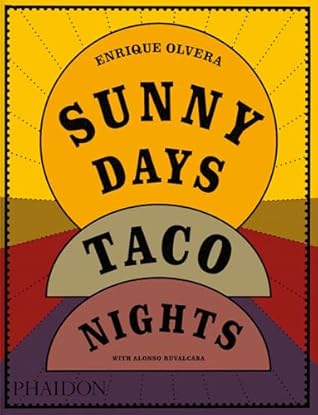
Sunny Days Taco Nights by Enrique Olvera
I love tacos and Mexican food. My favorite summer snack is homemade salsa. So, I'm always checking out taco/Mexican cookbooks to get new ideas. This one was a huge disappointment. I've never seen LESS appealing taco photos - like NONE of them looked good. Several were like a tortilla with a huge slab of some kind of meat on it. Surely that's not how you're expected to eat it? So why not show what it looks like with either cut or shredded meat and some toppings? It was just a disappointment overall.
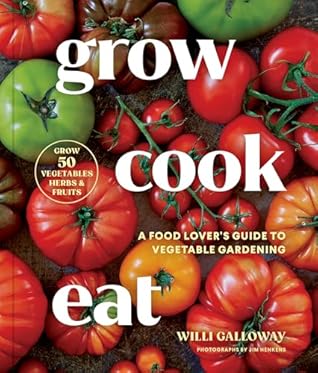
Grow Cook Eat: a food lover's guide to vegetable gardening by Willi Galloway
This is a unique half gardening half cookbook. The first 40 pages cover gardening basics - planning your space, creating good soil, planting, etc. Then the rest of the book is divided into types of plants - herbs, greens, legumes, squash, cabbage family, roots, warm-season vegetables, and fruit. Each section covers specific plants and tips for growing and then a recipe for that plant/veggie. There was a lot of good information but I do wish there were more recipes, one per plant/veggie just didn't seem like enough. But I think this would be a good book for a beginner gardener to help decide what to grow.
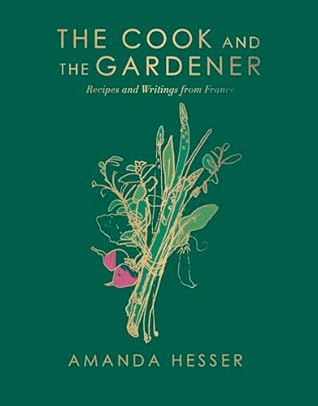
The Cook and the Gardener by Amanda Hesser
An American cook is working for a year in a French chateau and befriends a curmudgeonly French gardener. While the premise sounds great, I was expecting a cookbook. This was like half memoir/story of her time working as a chef at this French chateau and how she becomes friends with the older French gardener and his wife. I would read that book if it was published as food/gardening memoir/nonfiction book. But a cookbook with not one picture or photo of the recipes? No thanks. In the future, maybe I'll revisit when I have time to read all of the writing around the recipes. I also agree with one review I read that said it had a know-it-all vibe too. I haven't read any of her other books and after this one I'm not inspired to.
June 2025 Reviews
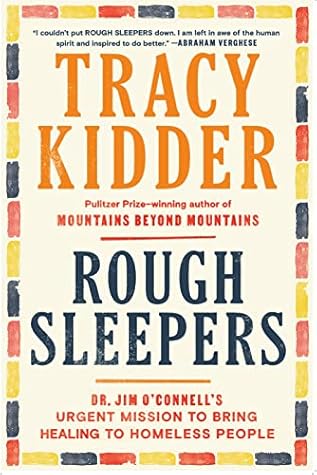
Rough Sleepers by Tracy Kidder
When Dr. Jim O'Connell graduated from Harvard Medical School, he was asked to defer a prestigious fellowship and help launch a grant-funded program to bring medical care to Boston's homeless population. He agreed and ended up finding his life's calling. Dr. O'Connell launched "the Program" from his initial involvement with a grant-funded clinic for the homeless in Boston that now hosts several clinics, a mobile outreach/clinic, and a building for respite care. He and a team of nurses, doctors, psychiatrists, and social workers try to help Boston's homeless have "continuity of care" despite their circumstances. There have been some success stories - former patients who got clean, got housing, and became productive citizens. Some of those success stories now work for the Program and give back to the organization that helped them. Sadly, the vast majority of the people the Program has helped are either dead or still homeless. So, what keeps Dr. O'Connell and his team going despite the hard work they are doing? That's what Tracy Kidder explores in this book. It's a portrait of Dr. O'Connell, the Program, and several memorable people from the Boston streets. This is obviously not a job everyone could do, but Dr. O'Connell makes it seem interesting and even though he rarely sees huge victories he focuses on the small victories and making each person he works with feel like a worthy human being. Eye-opening, sad, and heartwarming all at once, this is a unique book about a very unique doctor doing what he can to address the issue of homelessness in Boston.
Some quotes I liked:
"In the shelter clinics and on the van, Jim came face-to-face with dozens of people who hadn't been to a doctor in years, let alone a psychiatrist or dentist. He saw many rotted teeth and many cases of scabies and lice...At times Jim imagined that he and his colleagues were practicing something like wartime or post-earthquake medicine. It was as if he had been parachuted into another world that modern technologies had never reached. The situation was appalling, the work overwhelming. And, if he was honest with himself, utterly fascinating." (p. 42)
"Homelessness had a complex taxonomy. It included families and also many lone individuals, generally divided into four categories. There were the 'hidden,' such as the Street Team patient who slept in a rented storage locker. The 'transitional,' by far the most numerous, fell into homelessness only briefly, while the 'episodic' did so a few times a year. A smaller category - about 10 percent in 2018 - belonged to the 'chronic' category, living in constant or near-constant homelessness. That chronic group had two main subgroups - those who spent most of their nights in homeless shelters and those who slept rough, on pavement and park benches, in doorways, ATM parlors, tents on the outskirts of town...Some rough sleepers claimed their own distinction, labeling as 'snowbirds' those who slept out only in warm months and retreated to shelters in the winter. In fact, the difference was important. In Massachusetts, the people who lived mostly in shelters suffered a death rate about four times higher than that of the state's general adult population. But the people who stayed outside year-round - the Street Team's special patients, whom Jim had once imagined as 'hardy survivors' - died at about ten times the normal rate." (p. 55-56)
"By contrast, neither Jill nor the workers from Home Start had any experience in teaching domestic arts to rough sleepers, whose finely honed skills for outdoor living didn't help them indoors. Jim remembered a patient who actually pitched a tent in his apartment. Industrial cleaning was needed sometimes, not just because of partying but because many new tenants didn't know how to clean a stove or a bathroom. Most didn't know how to pay bills or shop for groceries, let alone cook. One freshly housed man, unable to sleep for a few nights, went back out to the streets and made a tape recording of the sounds of traffic and sirens, which he used as his lullaby, his antidote to indoor insomnia. People who had adapted to the exigencies of street life had no idea how to fill their time indoors." (p. 102)
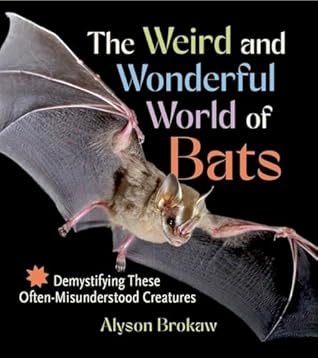
The Weird and Wonderful World of Bats by Alyson Brokaw
If you are interested in bats, this is the book for you. It is FULL of all kinds of information about every aspect of bats - how they use echolocation, how they fly, different roosting spots, what different kinds of bats eat, how they mate and raise young, etc. There is also a chapter on what we can learn from bats, how they are keystone animals, and what people can do to help bats. The book is full of lots of color photos of a variety of bats. The book is pretty easy to read, but some sections are a little science-heavy and may not be interesting to every reader. It reminded me a lot of The Owl Handbook by John Shewey - it's the same size book, full of color photos, and a mix of science and easily readable non-fiction writing. I really enjoyed this one and I hope to add a bat box to my back yard this year so that I can promote more bats in my yard.Some quotes I liked:
"In 1953, [George] Griffin dragged a literal truckload of equipment to a pond near Ithaca, New York, and listened to bats as they hunted insects above the water. He noticed that foraging bats were adjusting their sound production patterns in flight. At this point, no one had suspected that bats could use echolocation to detect and capture small, fast-moving insects on the wing. Even Griffin himself was surprised, later writing that 'echolocation of stationary obstacles had seemed remarkable enough, but our scientific imaginations had simply failed to consider...this other possibility with such far-reaching ramifications.'" (p. 27)
"Bats can process acoustic information from echoes with impressive speed and accuracy. A recent study found that Mexican free-tailed bats can accurately discriminate between different textures. Bats were trained to associate coarser grit sandpaper with a mealworm reward. They easily discriminated between ten different sandpaper comparisons...Put another way, these bats were able to differentiate textures using sound with about the same accuracy of a human hand discriminating texture using touch." (p. 35-36)
"Two species of bats deserve special recognition for their ability to ambulate on the ground: the New Zealand lesser short-tailed bat and the common vampire bat...To study how these bats move on the ground, researchers trained them to walk and run on a treadmill while recording them using high-speed video. Both bat species were observed to use a lateral sequence walk, a widespread form of walking in terrestrial animals where the left forelimb moves forward at the same time as the right hindlimb. Common vampire bats were notably very smooth during this movement, keeping their body at a constant height to move with a smooth, horizontal, catlike gait." (p. 104) [There is also a picture of a bat on a treadmill in the book!]
"As of 2013, more than 500,000 bats were estimated to be killed annually from wind farms in Canada and the United States...Bats either die by colliding with the turbines - which at the tip are moving at more than 200 miles per hour - or from trauma associated with rapid pressure changes near the turbines." (p. 240)

"Recent studies have uncovered 'rod monochromacy' as part of the evolutionary development of sloths. What that means is that sloths, over time, have lost the cones that enable color vision and so the animals can only see the world in black and white." (p. 62-63)
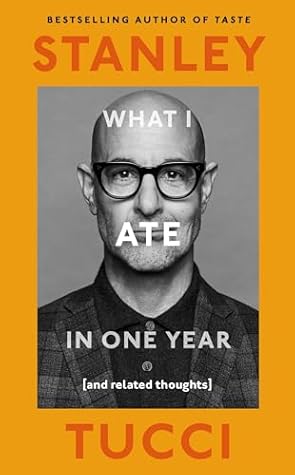
Some quotes I liked:
"I like to make tomato sauce whenever I return home after a trip, or when I arrive at a vacation home or wherever I'm staying while filming. I find it grounding. After the sauce has cooked for even just a few minutes, the new space smells more like home." (p. 66)
[On celebrating Thanksgiving even though they live in London] "Why do we do it? Because we like turkey? No. Frankly those busty, fatless fowls are a pain in the ass to cook, even though somehow Felicity has found a method of cooking them brilliantly. But we do it, we celebrate it...[because] the idea of communing through food is beautiful and something to be celebrated. People always think of the turkey when they think of Thanksgiving, but to me it's the side dishes, the trimmings, those ubiquitous 'fixin's', that make that day's meal wonderful rather than the big bird itself." (p. 293)
"We watched a couple of short Christmas films. I tried to find the ones I grew up with made by Rankin/Bass in the sixties, like Rudolph and the one about how Santa came to be, but to no avail. I couldn't even find the original Grinch narrated by Boris Karloff. I am sure they're all lurking out there somewhere in the ether, but I am simply not capable of finding the right button on the right remote to bring them back for a nostalgic holiday visit."
























